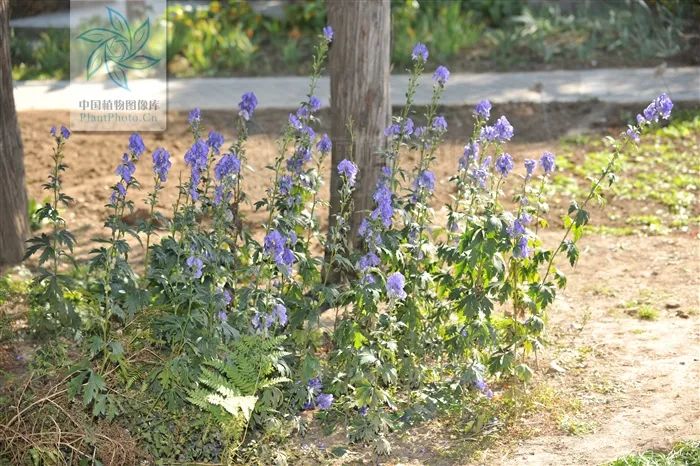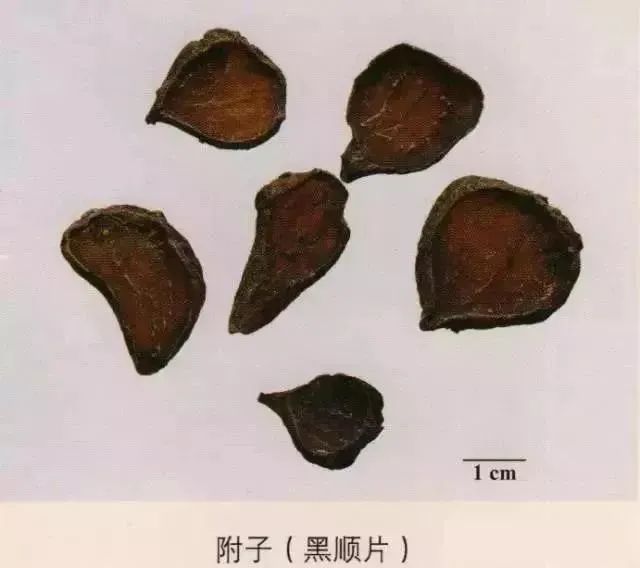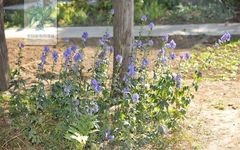Bencao Wendui: Aconite and Processed Aconite
Aconite has been used in medicine since the Shennong Bencao Jing, classified as a lower-grade herb for expelling pathogenic factors. In modern times, herbalists have reached a consensus on the classification of Aconite, which is the tuber root of the plant Aconitum carmichaelii Debx. The first to use processed Aconite was Zhang Zhongjing of the Eastern Han Dynasty. The processing method known as ‘pao’ is an ancient technique that predates the Song Dynasty. The Leigong Paozhi Lun states, “For processing, do not use mixed wood fire, only willow wood is best.” The Bencao Jing Jizhu mentions, “Heat with ash until it collapses, do not over-char.” The traditional method involves burying the plant in hot ash to heat it until it puffs. However, with societal development, this method gradually fell out of favor after the Song Dynasty. This is similar to how sweet potatoes, peanuts, and corn were once directly buried in ash to cook, but have now evolved to be baked in ovens. Today, processed Aconite is comparable to salt Aconite. The dual use of raw and processed forms is a common phenomenon in ancient herbal medicine, such as Sheng Di (Raw Rehmannia) and Shu Di (Cooked Rehmannia), Chi Shao (Red Peony) and Bai Shao (White Peony), etc. Aconite and processed Aconite are no exceptions, and no one mastered their application better than Zhang Zhongjing, who mentioned Aconite in 51 instances across 33 formulas in the Shanghan Zhabing Lun.
Zhongjing used raw Aconite for reviving yang and rescuing from reversal, while processed Aconite was used for warming yang, tonifying the kidneys, warming the middle, strengthening the spleen, warming the meridians, dispelling dampness, and alleviating pain.
Additionally, it is noteworthy that Zhongjing often annotated the use of Aconite with “remove the skin.” The skin of Aconite is very bitter and contains a large amount of the toxic component aconitine; removing the skin can reduce the toxicity of Aconite by nearly 50%. The ancients, of course, did not understand this principle, but the practice was based on experiential knowledge.

Aconitum carmichaelii
Currently, the processed products of Aconite include salt Aconite, black shun slices, and white Aconite slices. Salt Aconite has a stronger toxicity, while white Aconite slices are treated with sulfur. Therefore, black shun slices are more commonly used in practice. Black shun slices are made from small tuber roots and undergo a processing method that includes soaking, boiling, cutting, dyeing, steaming, roasting, and drying, without removing the skin; white Aconite slices are made from medium or larger tuber roots and require peeling during processing. Currently, processed Aconite, processed Aconite slices, light Aconite, and light Aconite slices correspond to black shun slices and white Aconite slices. The efficacy of Aconite, as recorded in the Shennong Bencao Jing, states, “It is primarily for wind-cold cough, warming the middle, treating traumatic injuries, breaking up masses, blood stasis, cold dampness, and alleviating pain in the feet that cannot walk,” but does not mention the function of reviving yang and rescuing from reversal. However, Zhang Zhongjing of the Eastern Han Dynasty skillfully used Aconite for reviving yang and rescuing from reversal, setting a model for innovative development. It is known that raw Aconite is the most toxic, and its cardiotonic and hypoxia-resistant effects are also the strongest, which may be the underlying reason for Zhongjing’s use of raw Aconite to revive yang and rescue from reversal. Whether through ancient fire processing or later methods such as steaming and boiling, all processing of Aconite has a detoxifying effect.
The toxic substance, diester aconitine, is easily destroyed by high heat. The detoxified Aconite is primarily used for warming and tonifying yang energy, “mainly for wind-cold cough, warming the middle,” and dispelling cold and alleviating pain, “cold dampness, alleviating pain in the feet that cannot walk,” but its use for invigorating blood and resolving stasis, “traumatic injuries, breaking up masses, blood stasis,” is rarely seen.
Aconite is classified as a toxic substance, and its toxic component, aconitine, is extremely potent, so clinical use must pay attention to safety.

(Source: Unknown, please contact for removal if infringing)
Aconite is one of the “Eighteen Contradictions” in herbal compatibility, which states that Aconite is contraindicated with Ban Xia (Pinellia ternata). Since Aconite is the tuber root of Aconitum, there are also sayings about the incompatibility of Aconite with Ban Xia. However, in ancient and modern prescriptions, the combination of Aconite (Aconitum) and Ban Xia is not uncommon. For example, in Zhang Zhongjing’s Jinkui Yaolue, the formula Chi Wan combines Aconite and Ban Xia to attack cold accumulation; the Aconite and red stone fat pill combines Aconite and Ban Xia to address chest obstruction due to cold accumulation. The combination of Aconite and Ban Xia was also seen early in Zhang Zhongjing’s work, as recorded in the Shanghan Zhabing Lun with the Xiao Qinglong Tang, “If there is choking, remove Ma Huang and add one piece of Aconite, processed.” This is the Xiao Qinglong Tang without Ma Huang plus Aconite; in the Jinkui Yaolue, the Aconite and rice soup treats cold evil obstructing the interior and yin-cold dampness rising. Aconite is also listed among the “Eighteen Contradictions” with Gua Lou (Trichosanthes fruit), but modern practitioners such as Zhu Weijiu, Zhang Boyu, and Zhang Wenqu have documented the use of Gua Lou and Aconite together to treat coronary heart disease. Additionally, they have been used together for gallstones, gastritis, and other conditions characterized by phlegm-damp stagnation or phlegm-stasis interlocking. In fact, although the “Eighteen Contradictions” rhyme was established during the Jin and Yuan dynasties, there was no explicit mention of Aconite being contraindicated with Ban Xia or Gua Lou in herbal texts before the Qing Dynasty. In Qing Dynasty herbal texts, works such as Bencao Fengyuan, Bencao Qiuzhen, and Bencao Cuoyao recorded the contraindications of Aconite with Ban Xia and Gua Lou. In contrast, the clinical usage of Aconite (Aconitum) being contraindicated with Ban Xia and Gua Lou is evidently not established.
Current experimental research has yet to provide a clear answer, and we hope for a definitive conclusion in the near future.
Beijing Old Half
January 18, 2022


